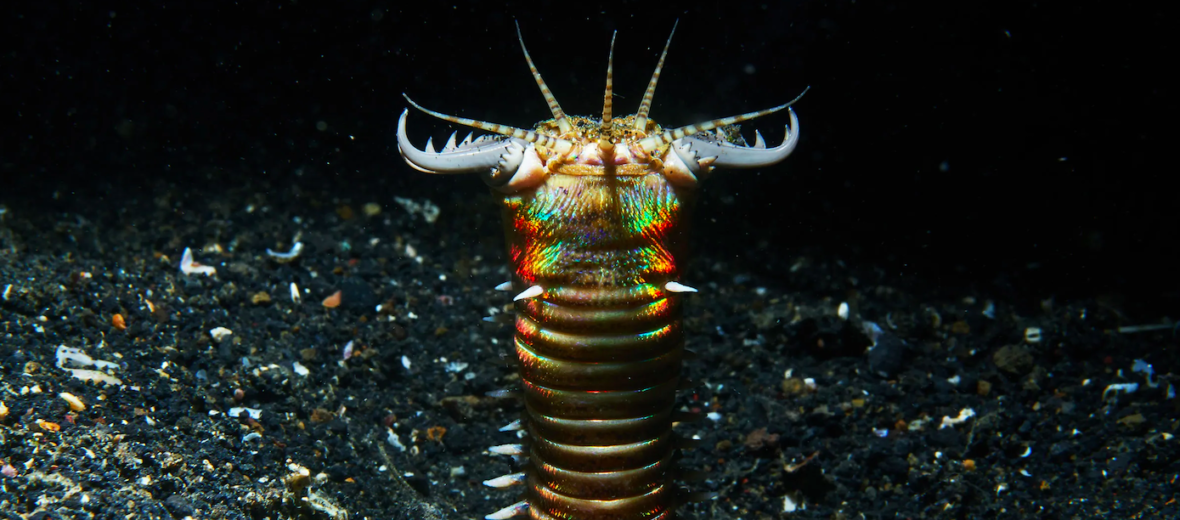
The bobbit worm, aka sand striker, is a study in how terrifying nature can be. These creatures can be found primarily in the Atlantic Ocean, but can also be found in the Indo-Pacific. These predators, aka nightmare fuel, lay in wait for passing prey to happen by. Then they attack, with ferocious speed and power. These terrifying creatures are not currently evaluated by the IUCN (International Union for Conservation of Nature).
First the Stats…
Scientific name: Eunice aphroditois
Weight: Up to 16 ounces
Length: Up to 10 feet
Lifespan: Up to 5 years
Now on to the Facts!
1.) These worms can have up to 673 segments!
2.) They use a protein-based mucous coating to line the walls of their burrow. This keeps it from caving in.
3.) Even though these worms have 2 rudimentary eyes, they instead rely upon 5 antennae to detect movement of prey.
4.) Bobbit worms have been around for around 20 million years, basically unchanged.
5.) They can be found in warmer waters at depths of up to 141 feet.
But wait, there’s more on the bobbit worm!
6.) The bobbit worm attacks with such force that often times their prey is literally cut in half.
7.) They have a primary pair of mandibles and 4 – 6 pairs of maxillae (jaws or jawbones).
Did you know…?
Their name hails from a myth that the female worm cuts off the male’s penis after mating and feeds it to her young. This is false as worms have neither penises nor vaginas, for that matter.
8.) Not only do they have a fierce bite, but the entire length of their body is covered in venomous bristles, hence their category of bristle worm.
9.) The venomous bristles can cause permanent numbness to the affected area stung and also cause a severe burning pain.
10.) Their bite also injects a narcotic toxin into the prey, immobilizing it for safe consumption.
But wait, there’s still more on the bobbit worm!
11.) They are known to attack humans when they get too close. Most likely assuming the human is food.
12.) Bobbit worms are nocturnal (active at night).
Did you know…?
Even when broken into pieces, these worms can still survive!
13.) These worms move in large swarms, to the surface, to release eggs and sperm which is called mass fertilization.
14.) In an act termed as “mobbing”, if the Peters’ monocle bream (a tropical fish) is attacked by a Bobbit worm, the fish will shoot sharp jets of water back at the worm. What’s even more cool is that the surrounding breams will launch a coordinated group attack by joining in with additional water jets, aimed at the worm. This typically results in the worm releasing the fish.
15.) These predators can also end up in reef aquariums and wreak havoc on the aquarium life therein.
Now a Short Bobbit Worm Video!
Be sure to share & comment below! Also, check out the Critter Science YouTube channel. Videos added frequently!
Want to suggest a critter for me to write about? Let me know here.



